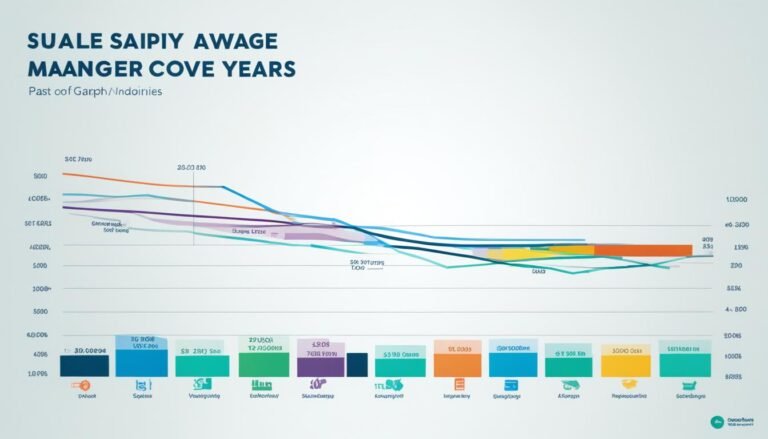Common Abbreviations for Managers Explained
|
Getting your Trinity Audio player ready...
|
Being familiar with common abbreviations used for managers can help streamline communication and make titles more concise. In this article, we will explore the various abbreviations for managers, their usage, and the benefits they offer in the business world.
Key Takeaways
- Understanding abbreviations for managers can enhance communication efficiency in the workplace.
- Common manager abbreviations include “Mgr.” and “Mngr.”
- Managerial titles may be abbreviated to save space, but the full term is usually used in general prose.
- Using abbreviations for managers helps reduce wordiness and confusion.
- Each company may have its own specific abbreviations, so it’s important to familiarize yourself with them.
Common Abbreviations in the Business World
Abbreviations and acronyms are commonly used in the business world to simplify communication and streamline titles. Some of the most common abbreviations for managers include CEO (Chief Executive Officer), CFO (Chief Financial Officer), CIO (Chief Investment Officer), COO (Chief Operating Officer), CMO (Chief Marketing Officer), and CLO (Chief Legal Officer).
“Using abbreviations like CEO and CFO helps make messages more concise and easier to remember,” says John Smith, a business consultant. “These abbreviations are widely recognized and speed up communication by providing shorter versions of common words and phrases.”
By utilizing these abbreviations, business professionals can enhance communication efficiency and convey information more effectively. The use of abbreviations in the business world is not limited to managerial roles, as various other job titles and positions also have their own abbreviations.
Other Common Business Abbreviations
Here are some other common abbreviations used in the business world:
- HR (Human Resources)
- IT (Information Technology)
- SME (Subject Matter Expert)
- KPI (Key Performance Indicator)
- B2B (Business-to-Business)
These abbreviations are widely recognized and used in various industries, making communication more efficient and professional.
Benefits of Using Manager Abbreviations
Using manager abbreviations can offer several benefits in the business world. Firstly, they make communication more concise by providing shorter versions of common words and phrases. This helps reduce wordiness and confusion, allowing for quick and clear exchange of information.
Secondly, abbreviations are easier to remember and understand. When individuals are familiar with common manager abbreviations, they can quickly interpret and process abbreviations in various contexts, improving communication efficiency.
Lastly, manager abbreviations speed up communication by reducing the effort required to convey information. Instead of using lengthy titles or full phrases repeatedly, using abbreviations allows for faster transmission of messages, saving time and effort for both the sender and receiver.
Overall, using manager abbreviations streamlines communication, facilitates understanding, and enhances the effectiveness of business interactions.
Tips for Using Manager Abbreviations
When it comes to using manager abbreviations, it’s crucial to be mindful of the specific conventions within your organization. Each company may have its own set of abbreviations or acronyms that differ from industry standards. To ensure effective communication, it’s essential to familiarize yourself with the manager abbreviation list used in your workplace.
For company-specific acronyms, it’s highly recommended to communicate their meaning upon first use. This helps avoid confusion and ensures that everyone is on the same page. Consider providing a printed guide or document that outlines the abbreviations and acronyms used within your organization. This can be especially useful for new employees who are still learning the ropes.
In written documents, it’s best practice to initially use the full term followed by the acronym or abbreviation in parentheses. For example, “Manager of Operations (MO)” or “Finance Manager (FM)”. This allows readers to easily grasp the meaning behind the abbreviation and become familiar with it over time. Once the abbreviation has been introduced, it can be used independently in the rest of the document.
Remember, not all companies follow the same abbreviations for manager positions. The key is to adhere to the specific conventions within your organization and effectively communicate their meanings to ensure clarity and understanding.
Benefits of Consistent Abbreviation Usage
Consistent and standardized use of manager abbreviations offers several advantages in the professional environment. By utilizing abbreviations, communication becomes more efficient and concise. It allows for faster transmission of information, especially in written correspondence or in tight spaces such as job titles and headers.
Additionally, manager abbreviations can enhance professionalism and contribute to a cohesive company culture. When employees are familiar with the abbreviations used within the organization, it promotes a sense of unity and streamlines communication across different departments and teams.
By following these tips and utilizing manager abbreviations effectively, you can improve communication clarity, save time, and promote a more efficient work environment.
Exploring Other Job Title Abbreviations
In addition to manager abbreviations, various other job title abbreviations are commonly used in job ads and business communication. These abbreviations help streamline communication, save space, and make titles more concise. Let’s take a closer look at some of the most common job title abbreviations in different categories:
Executive Abbreviations
Executives hold high-level positions in organizations, and their titles often have corresponding abbreviations. Here are a few examples:
| Title | Abbreviation |
|---|---|
| Chief Executive Officer | CEO |
| Chief Financial Officer | CFO |
| Chief Information Officer | CIO |
| Chief Operating Officer | COO |
| Chief Marketing Officer | CMO |
Assistant Abbreviations
Assistants play crucial roles in supporting executives and managers. Here are some common abbreviations for assistant positions:
- EA: Executive Assistant
- PA: Personal Assistant
- VA: Virtual Assistant
- Admin Asst: Administrative Assistant
Engineer Abbreviations
Engineers have specialized roles in various industries. Here are a few examples of engineering abbreviations:
AE: Application Engineer
CE: Chief Engineer
Chem Engr: Chemical Engineer
Mech Engr: Mechanical Engineer
Other Professional Abbreviations
There are numerous other job titles with their own abbreviations. Here are a few examples:
- Software Dev: Software Developer
- Sales Rep: Sales Representative
- UX Designer: User Experience Designer
- IT Spec: IT Specialist
These job title abbreviations are commonly encountered in job ads, resumes, and business communications. Using these abbreviations can save space, simplify titles, and enhance communication efficiency.
Common Abbreviations in the Executive Role
The executive role encompasses a range of managerial positions. Within the business world, there are several common executive abbreviations that are widely used and recognized. These abbreviations reflect the high-level responsibilities and titles associated with executive positions.
Here are some of the most popular executive abbreviations:
- CEO: Chief Executive Officer
- CFO: Chief Financial Officer
- CIO: Chief Information Officer
- COO: Chief Operating Officer
- CMO: Chief Marketing Officer
- CLO: Chief Legal Officer
- CHRO: Chief Human Resources Officer
These abbreviations are commonly used in business communication, job titles, and official documentation. They serve as shorthand representations of these executive positions, making it easier to refer to them in a concise and efficient manner.
Exploring Abbreviations for Assistant Positions
Assistant positions often have their own abbreviations to denote different roles and responsibilities. These abbreviations are used to streamline communication in the workplace and differentiate between various types of assistant positions. Here are some common assistant abbreviations:
- EA (Executive Assistant)
- PA (Personal Assistant)
- VA (Virtual Assistant)
- Admin Asst (Administrative Assistant)
These abbreviations enable efficient communication and help clarify the specific duties and areas of expertise of different assistant roles. For example, an EA typically supports high-level executives, while a PA may provide one-on-one assistance to an individual or a small team. VA refers to a remote assistant who provides virtual support, and Admin Asst encompasses various administrative roles within an organization.
By using these assistant abbreviations, communication between colleagues, supervisors, and clients can be more streamlined, concise, and effective. These abbreviations allow for clearer job titles and facilitate better understanding of each assistant’s responsibilities.
The Value of Assistant Abbreviations:
Using assistant abbreviations, such as EA, PA, VA, and Admin Asst, saves time and enhances productivity in the workplace. They enable professionals to quickly grasp the roles and responsibilities associated with different assistant positions, improving overall communication efficiency.
Assistant Abbreviations in Practice:
For instance, an executive seeking a personal assistant may specifically request applicants with a PA designation. In a corporate setting, an administrative assistant may be referred to as an Admin Asst in internal memos and documentation. These abbreviations allow for quick identification and understanding of the assistant’s role, benefiting both the organization and the individuals involved.
| Abbreviation | Assistant Position |
|---|---|
| EA | Executive Assistant |
| PA | Personal Assistant |
| VA | Virtual Assistant |
| Admin Asst | Administrative Assistant |
Abbreviations for Engineering Titles
In the field of engineering, various titles and positions have their own set of abbreviations. These abbreviations are widely used to denote different specializations and roles within the engineering industry. By using these abbreviations, professionals can streamline job titles and enhance communication efficiency. Here are some examples of common engineering abbreviations:
1. AE (Application Engineer)
Application Engineers specialize in designing and developing software applications for specific industries or functions. They work closely with clients and end-users to understand their requirements and create tailored solutions.
2. CE (Chief Engineer)
The Chief Engineer is a high-level position responsible for overseeing and managing engineering activities within an organization. They typically lead a team of engineers and ensure that projects are completed successfully.
3. Chem Engr (Chemical Engineer)
Chemical Engineers are involved in the design, development, and operation of chemical processes and systems. They implement and optimize processes to transform raw materials into valuable products, while considering safety and environmental factors.
4. Mech Engr (Mechanical Engineer)
Mechanical Engineers focus on designing, analyzing, and improving mechanical systems and devices. They apply principles of physics and materials science to create efficient and reliable machines and structures.
| Abbreviation | Job Title |
|---|---|
| AE | Application Engineer |
| CE | Chief Engineer |
| Chem Engr | Chemical Engineer |
| Mech Engr | Mechanical Engineer |
These are just a few examples of the many engineering abbreviations used in job ads and industry publications. Familiarizing yourself with these abbreviations can help you navigate the engineering field more effectively and communicate with colleagues and employers.
Conclusion
Abbreviations for managers play a crucial role in streamlining communication and titles in the business world. By using these abbreviations, professionals can make communication more concise, easier to remember, and faster. Whether it’s “Mgr.” or “Mngr.”, these common manager abbreviations help save space and provide a clear indication of a managerial role.
To effectively use manager abbreviations, it is important to familiarize yourself with the popular manager abbreviations used in your organization. Understanding their meanings and proper usage will enhance communication efficiency and professionalism in the workplace. By following best practices, such as communicating the meaning of abbreviations upon first use and providing printed guides, you can ensure clarity and consistency in internal and external communications.
Utilizing manager abbreviations is not only beneficial for individual organizations but also for the broader business world. These abbreviations are part of a larger system of abbreviations and acronyms used in various job titles and roles. From executive abbreviations like CEO and CFO to assistant abbreviations like EA and PA, streamlining communication with abbreviations is a common practice across industries.
In conclusion, manager abbreviations are a valuable tool for businesses to improve communication efficiency and convey information in a concise manner. By embracing these abbreviations and adhering to established best practices, professionals can enhance productivity, promote effective collaboration, and create a more streamlined and professional work environment.







